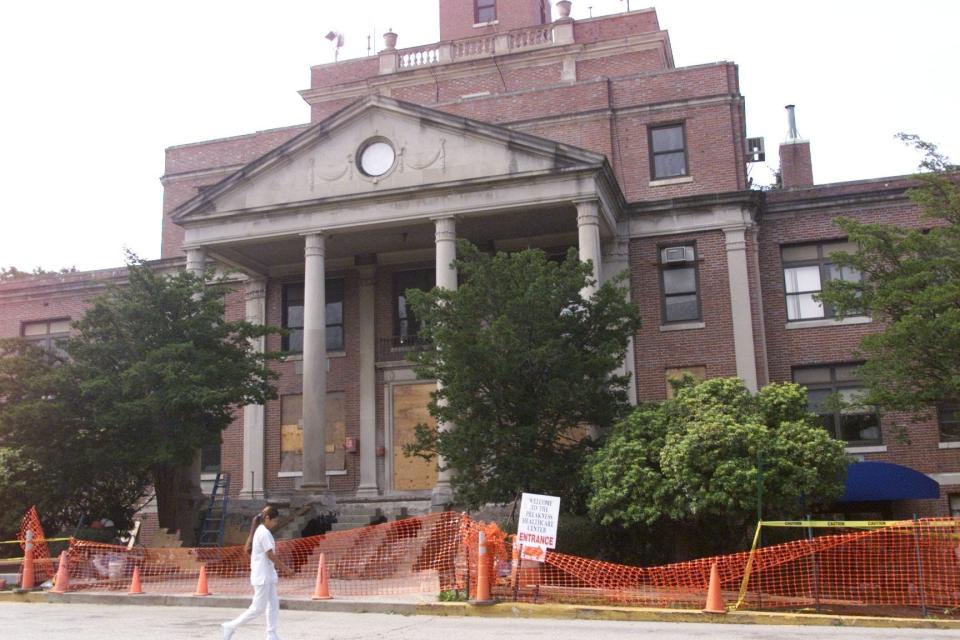Site of former tuberculosis sanatorium may become Passaic County's newest park
The site of a former tuberculosis sanatorium on the border between Wayne and Haledon may become Passaic County's newest park.
County officials this week confirmed they are in the preliminary stages of reimagining the former home of the Valley View Sanatorium as a new public complex for athletics and recreation.
Where was the sanatorium?
The site at the end of Valley View Road on the border between Wayne and Haledon has been clear since 2015. Only a parking lot remains from its life as a hospital.
Adjacent to Passaic County Technical Institute, the grassy site may someday house indoor fields and courts, community spaces and park offices, officials said. Trails and monuments could line the partially wooded grounds.

"In the coming months, a consultant is going to be retained to conduct public information sessions and develop conceptual plans to determine the best recreational amenities to include in the project," said a statement from the county government.
The property's history
The site has been owned by the county for about 100 years. Included in a 275-acre purchase, it was first developed by Passaic County's governing board in 1927 with a hospital exclusively for tuberculosis care. That year, about 2,830 New Jersey residents died from TB, state officials reported at the time. Officials said the "White Plague" was costing Passaic County residents about $3.5 million a year in medical expenses and ancillary costs. That is about $60 million today after factoring in inflation.
More:For centuries, scientists sought a tuberculosis cure. A Passaic man found it in the dirt.
Though greatly reduced in its domestic impact, as only about three in every 100,000 United States residents are diagnosed with TB, the disease still permeates in less developed nations and remains fatal, according to the World Health Organization. Spread mainly by close contact, TB attacks the lungs. Chronic coughing, fever and weight loss can occur, as can night sweats, chills and fatigue.
Who was treated at the sanatorium?
Opened in 1929 when Passaic County had among the highest per capita rates of tuberculosis in the nation, Valley View cared for 4,769 patients over its first 20 years. Most counted their stay in months, if not years, which made a local hospital all the more desirable to county officials. Before Valley View opened, Passaic County residents had to travel to a facility in Glen Gardner, Hunterdon County, for treatment.
One year after opening its doors, the facility had 200 patients and a waiting list of more than 30, according to newspaper reports. Francis Todd, the head of the New Jersey Health Officers Association, called for 300 beds. Local officials cried for expansion to 400. The sanatorium maxed out at about 230. All the while, some locals voiced opposition to the spending.
She's the first judge to wear a hijab on the bench in NJ. It's not her only accomplishment
The sanatorium operations were costing residents about $3.30 per patient per day, over $2 less than the cost at the average state hospital, Todd said in October 1930. Still, it didn't appear cheap. The facility was designed by Fred Wesley Wentworth, an architect who shaped more than a dozen buildings in Paterson. They include the old Passaic County Court House and Annex, the Ward Street YMCA and the former Alexander Hamilton Hotel on Church Street.
The last days of the sanatorium
The staff of the Morning Call newspaper in Paterson reported that the sanatorium's furnishings were deemed "fit for a millionaire's mansion." By July 1932, cost-cutting was the edict from county officials. Salary cuts came that August, The Morning Call reported. Freeholder William Young defiantly vowed that the facility would never close and declared that a welfare home would be the county's next goal. He delivered. In 1936, the $1.5 million Hope Dell facility opened nearby to care for 400 chronically ill and homeless people.
Both Valley View and Hope Dell were full through the 1940s. Waiting lists developed. In the mid-20th century, however, scientists introduced antibiotics to combat TB after Passaic's Albert Schatz discovered a cure. Eventually, fewer patients and a lack of upkeep saw some of the 228 beds that ultimately developed at Valley View empty. The response was to split the facility's focus.
Passaic taking a closer look at go-go bars, strip clubs, alcohol sales
In 1955, county officials approved the conversion of Valley View's east wing to tackle polio. The sanatorium became Passaic County Valley View Hospital and merged with Hope Dell six years later to become Preakness Hospital.
The dual facilities operated until 2009, when a third facility was expanded on the Hope Dell site to create the modern Preakness Healthcare Center. Valley View was demolished in 2015.
This article originally appeared on NorthJersey.com: Former TB sanatorium site may be Passaic County's newest park

